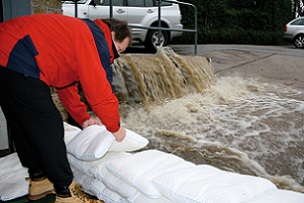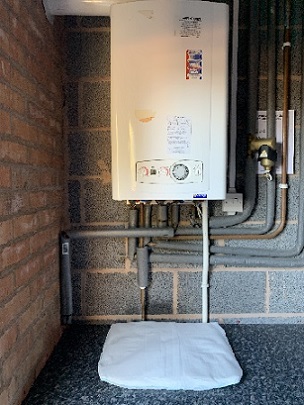 Storms are only part of the reason why Australia has been hit so hard by flooding in 2022
Storms are only part of the reason why Australia has been hit so hard by flooding in 2022
 FloodSax alternative sandbags holding back torrential floodwater
FloodSax alternative sandbags holding back torrential floodwater
 Multi-purpose FloodSax can be used inside to soak up drips, leaks and floods
Multi-purpose FloodSax can be used inside to soak up drips, leaks and floods
Why is it raining and flooding so much in Australia?
Australia has suffered catastrophic flooding over the last six months but why is it happening?
Well, the country has been hit exceptionally hard by two separate flooding events.
The October 2022 Australian floods have battered New South Wales, Victoria and the island of Tasmania exceptionally hard with Australia’s biggest city, Sydney, suffering its wettest year since records began in 1858.
In February, March and April 2022 flooding hit higher up the east coast of Australia, particularly South East Queensland and parts of coastal New South Wales along with Brisbane.
Thousands of people were evacuated due to the floods with damage running into many billions of dollars as homes and businesses were left wrecked by rising floodwaters.
What has caused all this rain in Australia?
The main problem is the La Nina in the Pacific Ocean – the cooling of surface water temperatures which brings above average rainfall across eastern and central Australia.
This has been made worse by the Indian Ocean Dipole which has a big impact on rainfall patterns on countries near the Indian Ocean, especially Australia. This is caused by a problem with sea surface temperatures with the western Indian Ocean becoming alternately warmer and then colder than the eastern part of the ocean, sending a lot of rainfall Australia’s way.
On top of all this, the usual storms keep on bringing heavy rain to eastern Australia.
It looks like the threat of flooding will continue from October to April as rivers are very high and dams full to overflowing so any more rain is sure to cause problems.
Many Australians now rely on FloodSax alternative sandbags rather than traditional sandbags to keep floodwater out of their homes and businesses.
Known as the sandless sandbag, the FloodSax is a British invention made by Environmental Defence Systems Ltd in Yorkshire, England, and now used worldwide. Multi-functional, it has a large, ultra-flat surface area when dry so can be used inside buildings to soak up leaks and floods, especially in hard-to-reach places such as beneath floorboards or under pipes.
But when fully immersed in water, the gelling polymer inside the FloodSax absorbs the water and retains it, transforming the FloodSax into an instant sandbag but without any sand. This means FloodSax are far more environmentally friendly than sandbags which tend to deteriorate and spill sand everywhere, including down drains, blocking them. FloodSax are 96% biodegradable by weight.
FloodSax are also very space-saving to store unlike sandbags which need vast warehouses and large vehicles along with a lot of people to move and deploy them anywhere. A box of 20 FloodSax can easily be carried by one person and they can be energised with water at the scene where they are needed.
For more information on FloodSax go to http://www.floodsax.co.uk/